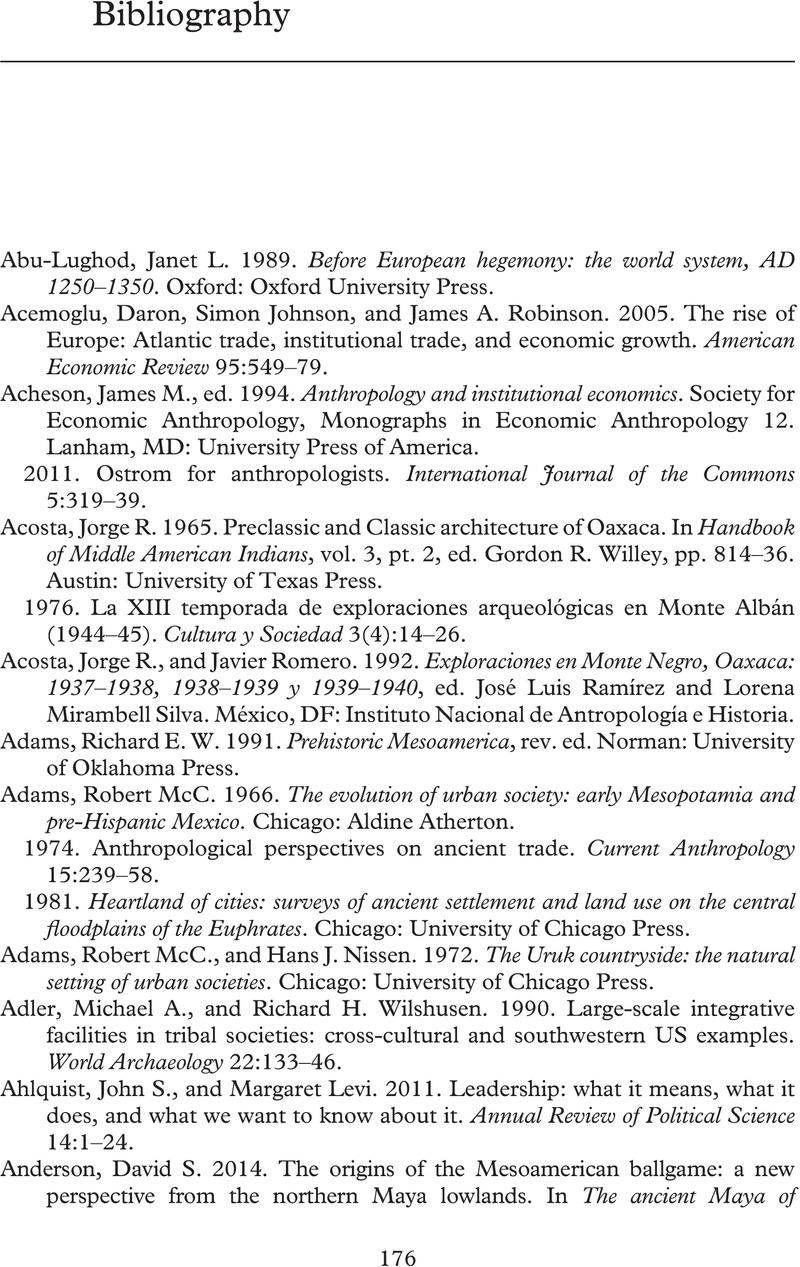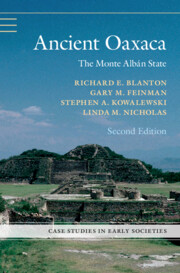Book contents
- Ancient Oaxaca
- Case Studies in Early Societies
- Ancient Oaxaca
- Copyright page
- Contents
- Figures
- Preface to the Second Edition
- 1 Introduction: Mesoamerica and Its Pre-Hispanic Civilization
- 2 Theorizing Sociocultural Evolution
- 3 Before Monte Albán
- 4 Origins of Monte Albán
- 5 The Great Transformation
- 6 Thinking About Theories of Sociocultural Evolution from the Perspective of Oaxaca
- 7 Cooperation and the Foundation of Monte Albán
- Epilogue
- Bibliographical Essay
- Bibliography
- Index
- References
Bibliography
Published online by Cambridge University Press: 07 July 2022
- Ancient Oaxaca
- Case Studies in Early Societies
- Ancient Oaxaca
- Copyright page
- Contents
- Figures
- Preface to the Second Edition
- 1 Introduction: Mesoamerica and Its Pre-Hispanic Civilization
- 2 Theorizing Sociocultural Evolution
- 3 Before Monte Albán
- 4 Origins of Monte Albán
- 5 The Great Transformation
- 6 Thinking About Theories of Sociocultural Evolution from the Perspective of Oaxaca
- 7 Cooperation and the Foundation of Monte Albán
- Epilogue
- Bibliographical Essay
- Bibliography
- Index
- References
Summary

- Type
- Chapter
- Information
- Ancient OaxacaThe Monte Albán State, pp. 176 - 203Publisher: Cambridge University PressPrint publication year: 2022



